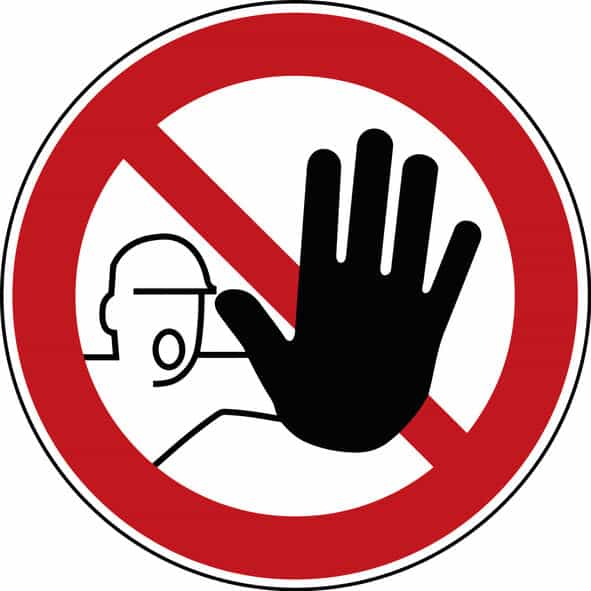One percent of all anglers fish by hand in the United States.
For more than a millennia, anglers and indigenous tribesmen have been practicing techniques known as trout tickling in order to catch fish using their bare hands. But today, is this technique still relevant, is it ethical, and more importantly, is it legal?
Trout tickling is a technique that has been practiced for centuries all over the world. It is a unique method that allows an angler to catch fish with their bare hands. The act of catching fish with your bare hands is illegal in 34 U.S. States as well as many other places throughout the world,
Of the 50 million people who go fishing every year, an average of 1% or about 500,000 anglers regularly fish by hand. According to a number of biologists, the hand fishing of trophy fish like trout is detrimental to the species as a whole. Tickling is the least common method of catching fish by hand.
In answering the question of whether trout tickling is legal or ethical, many variables need to be taken into account.
Let us take a deeper dive into the technique, as well as the legal ramifications and ethical aspects of fishing with your bare hands.
How to Tickle A Trout?
Trout tickling is a method of catching fish with your bare hands. It is a technique that has been practiced by tribes all around the world for millennia. In practice, an angler will walk up and down the banks of a small river or stream, which scares the fish and forces them to hide in overhanging sections of the bank.
Anglers will then approach the section along the river quietly, usually on their bellies. Carefully and cautiously, they slide their hand underneath the overhang, hoping not to startle the fish.
Starting from the tail, using a very gentle and delicate touch, and angler then massages and strokes the underbelly of the fish, working its way up to the head.
As they slowly caress and rub the fish’s underbelly, it is put into a trance that lasts for a few seconds at a time. Ever so softly, they will make their way up to the fish’s head, and when there, with a firm grip, they will grab a hold of a gill, fin, or any part just behind the head they can get a firm grip on.
From there, the struggle of pulling the now startled fish from the water begins.
Why Does Trout Tickling Causes Trout to Go into a Trance?
The physical act of trout tickling stimulates the fish much like the ebb and flow of seaweed under their bellies. It is a calming and soothing sensation for the fish, which puts them in a daydreaming type of trance.
It is short-lived, but in the few seconds that the fish is in this trancelike state, an angler has the ability to grab them by the gill and yank the fish out of the water without ever dropping a hook. No one knows exactly why the trout goes into a trance, nor what the trance feels like to the fish.
But, for millennia, people have used this technique around the world to catch fish with their bare hands.
Is Trout Tickling Harmful to Trout?
Without a question, the physical act of trout tickling is not harmful to the trout at all. Most anglers who use the technique to catch a trout with their bare hands, however, intend on keeping it to eat later. So, while the physical act does not harm the trout, it ultimately leads to the trout’s demise and consumption.

Is Trout Tickling Illegal?
Many anglers often wonder whether trout tickling is illegal. It’s important to remember that in most states, trout tickling is a form of hand fishing, and in 34 states, including the District of Columbia, fishing with your bare hands is illegal.
Trout tickling is currently illegal in 34 states:
- Arizona
- California
- Colorado
- Connecticut
- Delaware
- Florida
- Georgia
- Idaho
- Illinois
- Indiana
- Iowa
- Kentucky
- Louisiana
- Maine
- Maryland
- Massachusetts
- Michigan
- Minnesota
- Missouri
- Montana
- Nebraska
- Nevada
- New Hampshire
- New Jersey
- New Mexico
- New York
- North Carolina
- North Dakota
- Ohio
- Oregon
- Pennsylvania
- Rhode Island
- South Carolina
Trout Tickling’s legality is unknown in the remaining 17 states, so anglers should reach out to their local Department of Natural Resources for clarification. These states are:
- Alabama
- Alaska
- Arkansas
- Hawaii
- Kansas
- Mississippi
- Oklahoma
- South Dakota
- Tennessee
- Texas
- Utah
- Vermont
- Virginia
- Washington
- West Virginia
- Wisconsin
- Wyoming

History Behind Trout Tickling
The technique known as trout tickling has been practiced for millennia. Indigenous tribes around the world have used this technique to catch fish with their bare hands. In Europe, the earliest records of trout tickling can be found in William Shakespeare’s comedy entitled Twelfth Night.
It is used in the story as a metaphor, and it refers to the bamboozlement of Maria who is setting out to play a prank on Malvolio.
In the 1901 book by Thomas Martindale, he describes the method of trout tickling in great detail. There, he explained how fish were watched as they swam up through the shallows and rapids until they came to a sheltered spot under the ledge or rock in the water.
From there, poachers would see their tails moving and instinctively slide their hands underneath in order to slowly and carefully capture the fish. From there, the angler would pull the fish out of the water and, with a quick blow to the head, would render it unconscious.
During the 1930s, trout tickling was used by workingmen, poachers, as well as boys as a useful way of catching fish without the need for a net or a rod. It was during the Great Depression that many families around the country began to starve due to a lack of money and food. While fishing on public lands, if a game warden caught them, they would be punished for poaching.
Instead, in order to ensure their own survival, they would find ways to catch fish without ever having to carry a net or pole with them.
Today, trout tickling is illegal in most of Europe and the U.S.
What Other Fish Can Be Tickled?
The most notable type of fish that can be caught using tickling is trout. However, this technique has been used by indigenous tribesmen around the world to catch a wide variety of both freshwater and saltwater fish.
There are a number of tales about aboriginal tribes and New Zealand and Australia that have used this technique for centuries. Common types of fish that can be caught by tickling include:
- Trout
- Salmon
- Perch
- Smelt
- Char
Is Tickling Fish Ethical for Anglers?
If you are thinking about tickling trout as a way of catching fish with your bare hands, you may wonder whether it is ethical. The fact is, is that if you have to ask yourself whether a technique is ethical, chances are it is not.
Depending on how you look at it, catching a fish with your bare hands can be seen as a major accomplishment for any angler. At the same time, it can require more skill to catch a fish using a rod and reel than by any other method.
So depending on how you look at it, trout tickling can be both ethical and unethical.

